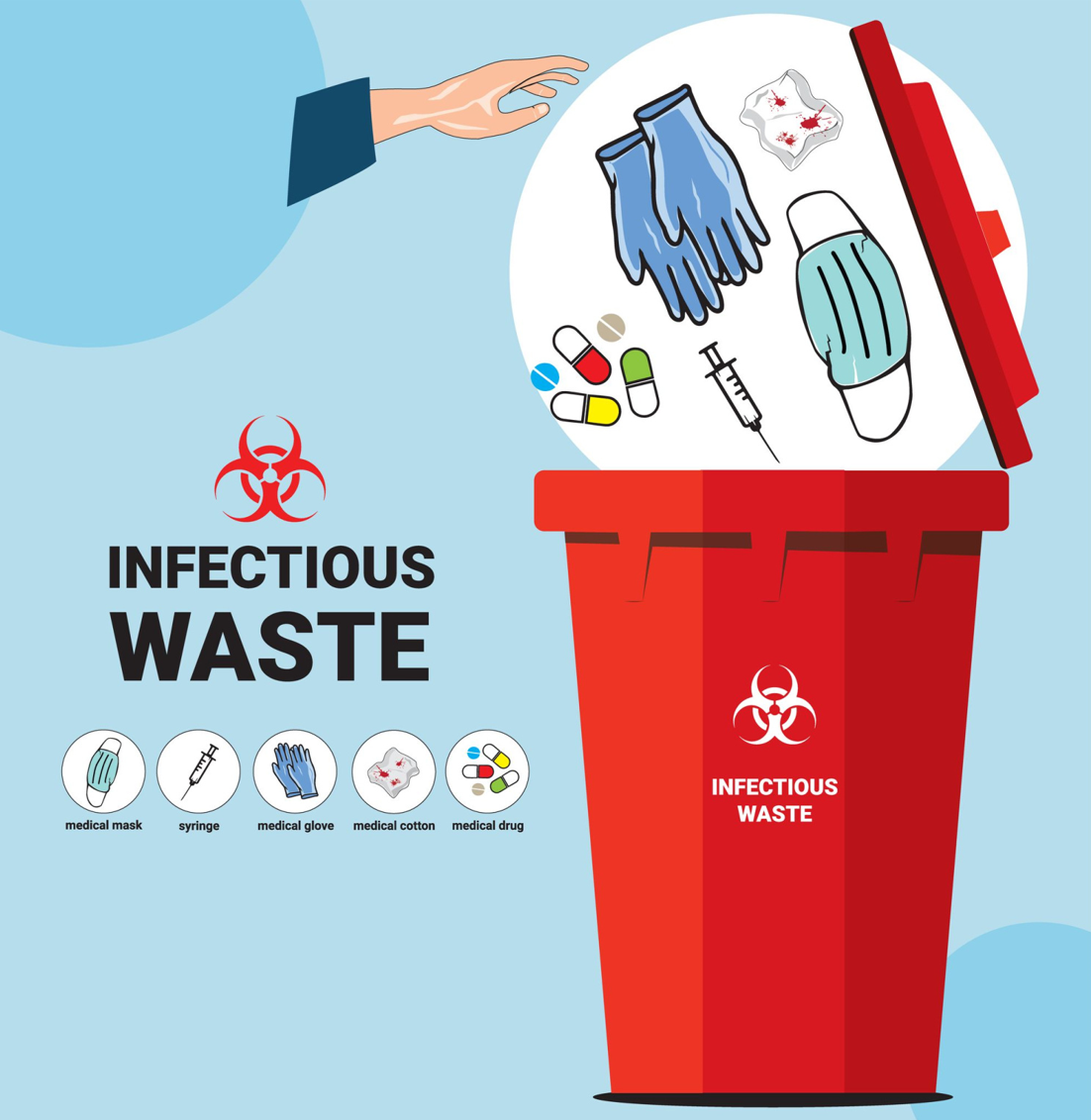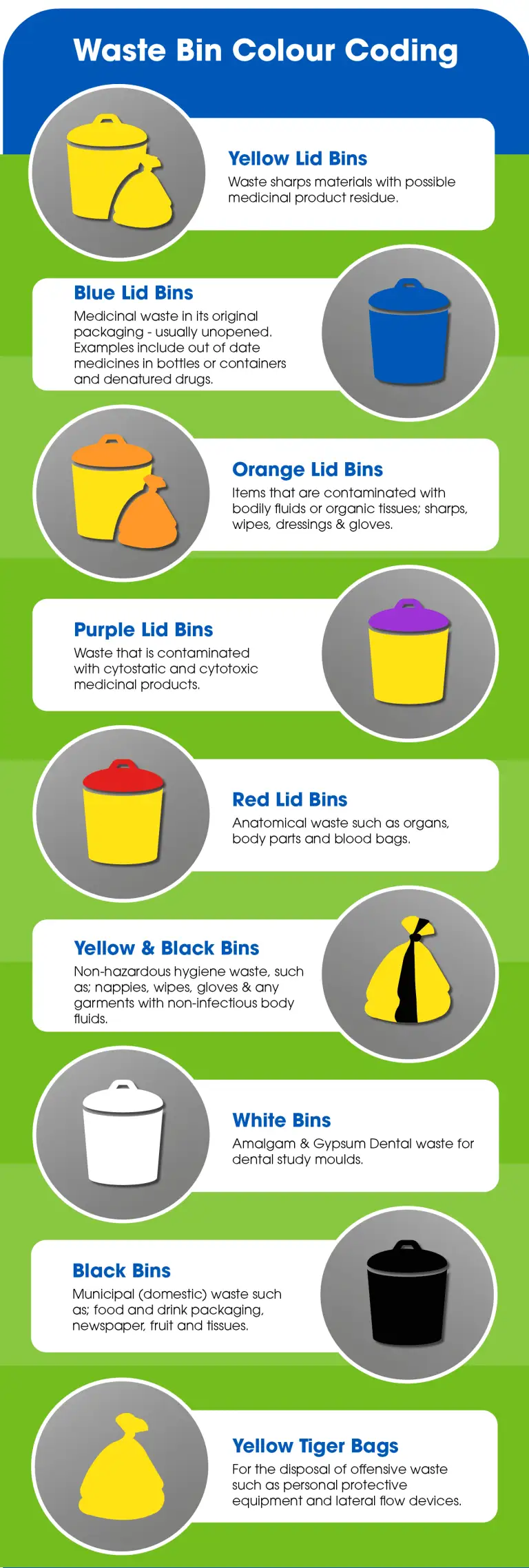Sustainable Solutions for Medical Waste Disposal
The appropriate administration and disposal of medical waste is important in keeping a lasting and secure healthcare system. As the volume of medical waste proceeds to rise, finding lasting options becomes significantly vital. This necessitates the fostering of efficient and eco-friendly techniques for throwing away clinical waste. This introduction will certainly explore various lasting remedies for clinical waste disposal, consisting of waste partition and sorting, on-site waste therapy systems, reusing and reuse programs, waste-to-energy conversion innovations, along with partnership and education and learning campaigns. By applying these services, health care facilities can not just lessen the environmental influence of medical waste, but additionally ensure the security of health care employees and the general public.
Waste Segregation and Arranging
The process of waste partition and sorting is vital in guaranteeing appropriate administration and disposal of clinical waste. Medical waste is classified into different groups based upon its possible risk to human health and wellness and the environment. Correct partition and sorting of waste assistance to decrease the danger of contamination and ensure that each sort of waste is managed and taken care of properly.
The initial step in waste partition and sorting is to determine and divide different kinds of clinical waste at the point of generation. This involves identifying the different groups of waste, such as infectious waste, sharps waste, pharmaceutical waste, and chemical waste. medical waste removal service. Each category needs particular taking care of and disposal approaches to stop harm to medical care workers, patients, and the atmosphere

On-site Waste Treatment Equipments
Proceeding from the previous subtopic on waste partition and sorting, a reliable option for sustainable medical waste disposal is the implementation of on-site waste therapy systems - medical waste disposal. These systems allow medical care facilities to treat their medical waste on-site, minimizing the demand for transportation and disposal at off-site facilities. On-site waste therapy systems typically include modern technologies such as autoclaves, microwave systems, or chemical sanitation systems
Autoclaves, commonly made use of in medical care settings, make use of high-pressure heavy steam to sanitize and deal with medical waste. This procedure successfully kills microorganisms, viruses, and various other potentially hazardous microorganisms, rendering the waste risk-free for additional handling and disposal. Microwave systems, on the various other hand, use microwave radiation to heat and deal with the waste, achieving similar outcomes to autoclaves.
Chemical disinfection devices involve using chemicals to sanitize and deal with clinical waste. These systems can make use of different anti-bacterials, such as chlorine-based options, to neutralize microorganisms and reduce the danger of contamination. The treated waste can then be securely gotten rid of in normal waste streams or undergo additional therapy, such as shredding or incineration.
Executing on-site waste therapy systems offers a number of benefits. It decreases the ecological impact connected with carrying clinical waste to off-site centers, lessening carbon exhausts and the threat of crashes during transport. Furthermore, it supplies healthcare centers with more control over the therapy procedure, making sure conformity with regulations and lowering the potential for unauthorized access to sensitive clinical waste.
Recycling and Reuse Programs
To further improve sustainable clinical garbage disposal techniques, medical care facilities can implement recycling and reuse programs, building on the foundation of on-site waste treatment systems. Recycling and reuse programs provide an extra layer of ecological responsibility by diverting medical waste from garbage dump and searching for alternate usages for particular materials.
One secret facet of recycling and reuse programs is the segregation of waste at the source. medical waste disposal service. By executing proper waste segregation methods, healthcare centers can divide recyclable materials, such as plastics, metals, and glass, from non-recyclable waste. This enables the reliable recycling of these products, lowering the demand for virgin resources and minimizing the environmental impact of medical garbage disposal
Along with reusing, healthcare facilities can explore opportunities for reusing certain clinical things. For instance, single-use items like medical drapes and gowns can be disinfected and recycled, minimizing the requirement for new materials and reducing waste generation. Multiple-use sharps containers can likewise be utilized, minimizing the quantity of plastic waste created from disposable containers.
Implementing recycling and reuse programs calls for correct facilities and training - WasteX Medical Waste Disposal. Health care facilities have to purchase ideal reusing containers, partition systems, WasteX Medical Waste Disposal and sterilization tools, as well as make sure team are informed on proper waste management practices
Waste-to-Energy Conversion Technologies
One possible technique to deal with medical garbage disposal sustainably is with the application of waste-to-energy conversion technologies. These modern technologies offer an appealing service to the growing issue of medical waste, which postures considerable ecological and public health and wellness dangers. Waste-to-energy conversion involves transforming the organic parts of medical waste into power, such as heat or power, through numerous procedures like gasification, incineration, and pyrolysis.
Incineration is the most frequently made use of waste-to-energy innovation for clinical waste disposal - WasteX Medical Waste Disposal. It includes the controlled burning of waste at heats, transforming it into ash, gases, and warm. This warm can be made use of to create vapor, which can after that be exchanged electrical power
Pyrolysis and gasification are newer modern technologies that supply even more eco-friendly alternatives to incineration. Pyrolysis entails heating up the waste in the absence of oxygen, resulting in the manufacturing of gases and char. Gasification, on the other hand, transforms waste into a synthetic gas or "syngas" that can be made use of as a gas for electrical energy generation or other industrial procedures.
These waste-to-energy conversion technologies not only decrease the volume of medical waste but additionally supply a resource of sustainable energy. Furthermore, they can help in reducing greenhouse gas discharges and reliance on nonrenewable fuel sources (WasteX Medical Waste Disposal). It is important to guarantee that these technologies are carried out with proper exhausts control actions to minimize any kind of potential unfavorable influences on air high quality and public health and wellness.
Partnership and Education And Learning Campaigns
Collaboration among stakeholders in the health care industry is crucial for carrying out sustainable remedies for medical garbage disposal. In order to efficiently resolve the difficulties linked with medical waste monitoring, it is vital for medical care facilities, waste administration firms, regulators, and various other pertinent parties to work with each other.

In addition, education initiatives play a vital role in promoting lasting practices. Healthcare professionals require to be aware of the ecological influence of inappropriate waste monitoring and the relevance of applying lasting options. Educating programs and academic materials can help them understand the proper segregation of waste, making use of eco-friendly alternatives, and the benefits of waste-to-energy conversion technologies.
Partnership and education and learning can additionally assist in the growth of laws and standards for clinical garbage disposal. By interacting, stakeholders can add to the development of detailed plans that make sure risk-free handling, transport, and therapy of clinical waste.
Verdict
To conclude, embracing sustainable options for clinical garbage disposal is critical in order to decrease the negative effect on the setting and public health and wellness. Waste partition and sorting, on-site waste treatment systems, recycling and reuse programs, waste-to-energy conversion modern technologies, and cooperation and education initiatives are all essential strategies to attain this goal. Implementing these options requires cooperation between medical care facilities, waste administration companies, and federal government agencies, in addition to continual education and recognition campaigns.
The procedure of waste partition and sorting is vital in guaranteeing correct management and disposal of medical waste.The initial step in waste partition and sorting is to recognize and separate different kinds of medical waste at the point of generation. This entails recognizing the different groups of waste, such as infectious waste, sharps waste, pharmaceutical waste, and chemical waste.Proceeding from the previous subtopic on waste partition and sorting, an effective option for lasting clinical waste disposal is the implementation of on-site waste therapy systems. The treated waste can then be securely disposed of in regular waste streams or go through more treatment, such as shredding or incineration.